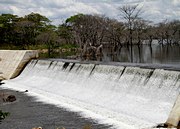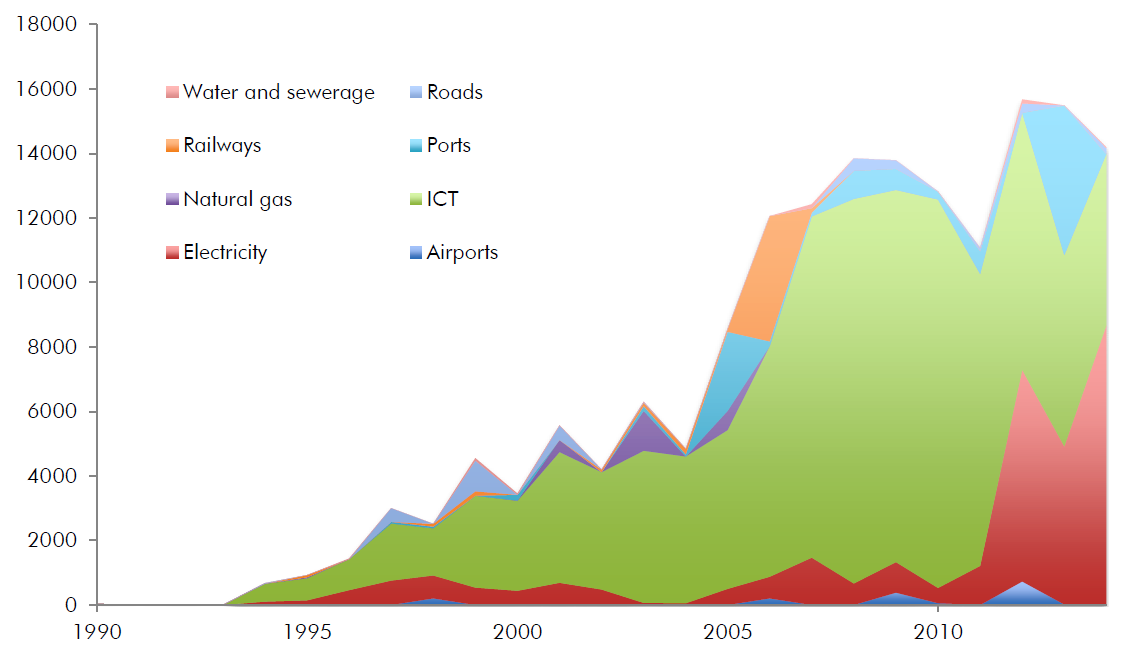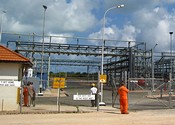A new SEI paper looks at experiences in Tanzania and Zambia to show the tensions between pursuing much-needed private investment and ensuring that benefits accrue to all citizens.

Modern energy infrastructure is crucial to countries’ economic growth and development. Yet in much of sub-Saharan Africa, power generation and grid build-out are starkly deficient. Indeed, the entire region generates about as much power as Spain, to serve nearly 20 times the population.
A new SEI study examines why building and improving Africa’s energy infrastructure has been so difficult, focusing on case studies of natural gas development in Tanzania, and grid-connected power generation in Zambia. It finds that in both countries, progress has been hindered by poor governance, a shortage of people with the capacity to work in or regulate the energy sector, and the hard reality that much of the population cannot afford to pay market rates for electricity.
And even where infrastructure investments have gone forward, the benefits to the poor are often difficult to demonstrate.
“The roots of these problems go back many decades,” says Oliver Johnson, lead author of the study and deputy director of SEI’s Africa Centre. “By taking a historical perspective, we show how today’s challenges are embedded in a well-established political, institutional and socio-cultural context, and we identify opportunities for change.”

The study is part of SEI’s contribution to the initiative Better Finance, Better Development, Better Climate: Integrating Development and Climate Finance in Support of the Sustainable Development Goals, which includes the New Climate Economy project as well as the Brookings Institution, the London School of Economics and Political Science, and McKinsey & Company.
“Our goal was to provide in-depth case studies to ground some of the higher-level work on financing at a global level that the consortium is doing,” Johnson says. “We chose two countries where we’ve done quite a bit of work, and both of which are struggling to scale up energy-sector investment.”
The study starts from the premise that energy infrastructure is not inherently good for development – for instance, if a power plant is built only to serve a large mine, the “trickle-down” benefits to the population at large would be negligible. Instead, the authors find, countries should aim to drive investment in sustainable infrastructure – that is, infrastructure that meets local needs in a socially acceptable, environmentally friendly and equitable manner.
“Not only do the projects themselves have to meet these standards, but that the process by which projects are chosen, designed, developed and implemented should be legitimate, transparent and equitable,” says Sivan Kartha, a senior scientist in SEI’s U.S. Center and co-author of the study. “The goal should be to maximize social benefits, job creation and other positive impacts and minimize negative impacts such as pollution or rate hikes that put energy services out of people’s reach.”
The authors also start from the premise that infrastructure shouldn’t just be taken to mean large-scale, capital-intensive investments such as power plants, but also medium- and small-scale options such as mini-grids. Investment in human capital (“soft” infrastructure), they note, is also crucial. Indeed, it is sometimes underinvestment in human capital that is the real bottleneck to broad-based development.

Sub-Saharan Africa needs an estimated US$90 billion per year in infrastructure investment to achieve development goals. The private sector has only invested a small fraction of that so far, but foreign direct investment (FDI) now far exceeds official development assistance (ODA), by about a 5:1 ratio in 2014. Thus, African governments recognize that to attract the large sums they need to build new dams, power plants, grid infrastructure, etc., they need to court private investors.
But attracting private investment without short-changing the people’s needs requires a careful balancing act, the authors note. They highlight four key challenges:
• Balancing liberalization with control over crucial resources and the right to regulate them;
• Balancing attractive risk-return rates for investors with accessible and affordable services for the population, including very poor people;
• Balancing efforts to attract private investment with continued public investment; and
• Balancing global development priorities, as expressed in the Sustainable Development Goals, with the specific needs of local communities.
“These tensions can be difficult to manage, but by explicitly recognizing them, we can bring much-needed transparency to decision-making processes,” says study co-author Cassilde Muhoza, a research associate in SEI’s Africa Centre. “The more we can talk openly about competing priorities, in a democratic and inclusive manner, the better our chances of achieving broad-based benefits.”

The case studies reveal notable similarities between Tanzania and Zambia, despite their very different situations. Tanzania has discovered massive natural gas reserves, while Zambia’s energy system is in crisis due to droughts that have curtailed hydropower output. Yet both are struggling to meet fast-rising energy demand due to population growth and expanding industry and commerce. Both countries have ambitious development goals. And both face considerable institutional capacity constraints, remaining dependent on donor funding and foreign technical assistance.

“Tanzania has a huge opportunity to develop its natural gas resources for domestic use and export, but it’s having trouble turning promise into reality,” says Johnson. “Meanwhile, in Zambia, the energy crisis is arguably an opportunity, as it has forced the country to accelerate infrastructure development and diversify its energy supply. Investing in both on- and off-grid renewables could be particularly helpful in overcoming the problem of dependence on large-scale hydropower. It also has huge potential as a way to meet the electricity needs of rural populations.”
The researchers interviewed 30 energy-sector stakeholders for the study, and now they will share the results and seek their feedback, Johnson says. “We hope to stimulate debate and get ideas for how we might build on this work to explore unresolved issues.”
Asked what he sees as the key message of the study, Johnson says it is that driving sustainable energy infrastructure investment in Africa is a team effort – governments can’t do it alone, nor can the private sector be expected to automatically invest sustainably.
“It’s not enough to focus on financing mechanisms, or to put policies in place,” he says. “You need to bring people together to share insights, learn from experience and build trust. Government has a key role to play, but development partners, local and international NGOs, industry associations, businesses and community groups all have to be at the table as well.”
Design and development by Soapbox.



